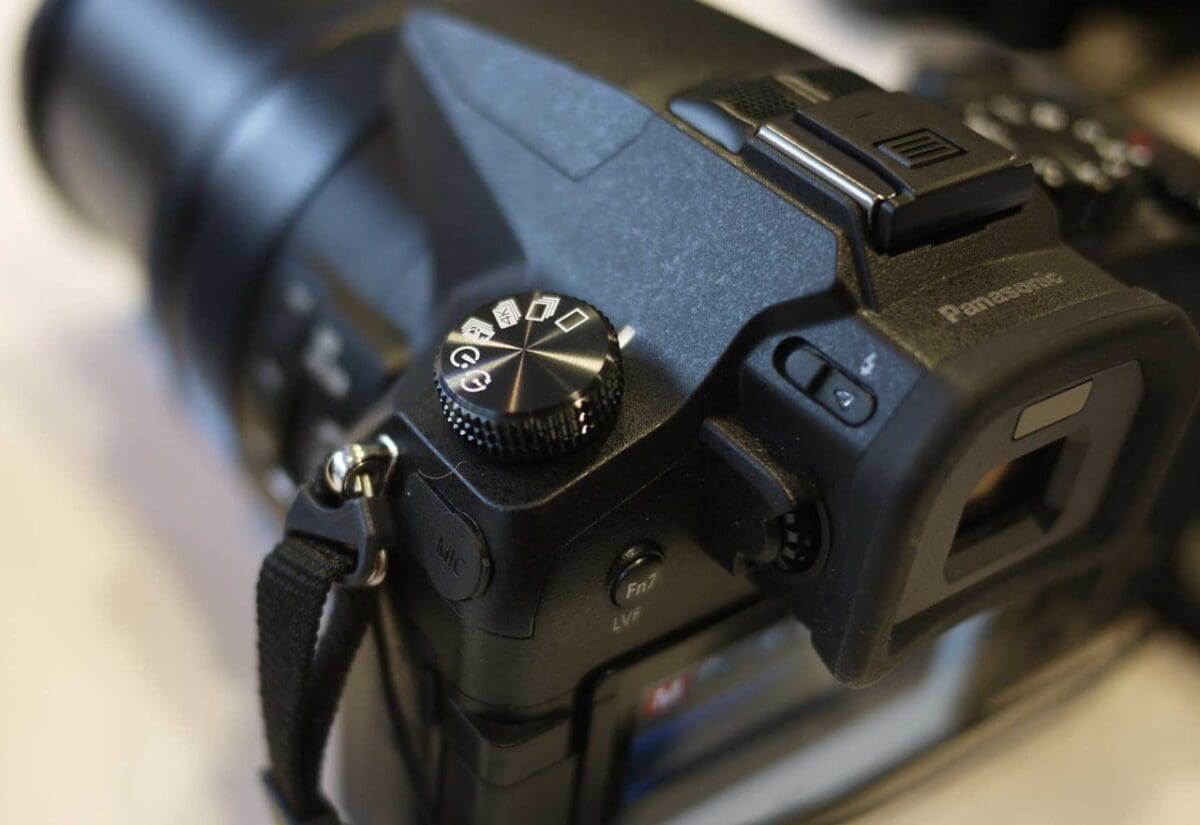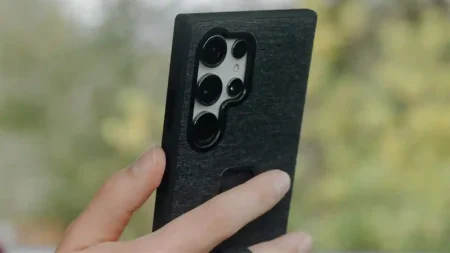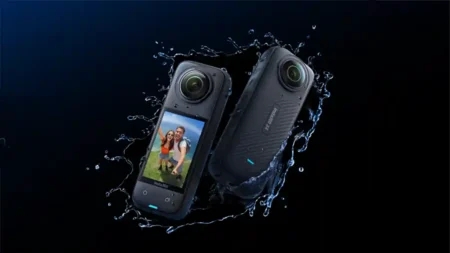Panasonic FZ2000
The Panasonic FZ2000 is the company’s big update to its popular FZ1000 bridge camera, adding unlimited 4K recording and and an enhanced lens. Is this the best bridge camera you can buy? We put it to the test in our Panasonic FZ2000 review.
30 second Panasonic FZ2000 review…
The Panasonic FZ2000 is a robust, well-built camera with careful attention to detail, from the way it’s deep hand grip fits snugly into your palm, to the clever use of function buttons on the lens barrel and a brilliant touchscreen LCD.
Panasonic’s latest bridge camera does a lot of things very well and breaks the mould of what we used to think about bridge cameras, offering top-line features like unlimited 4K video recording and other specifications aimed at giving your footage a polished, professional look.
It’s AF system is fast and accurate, and image quality is superb without any problematic noise or distortions at sensitivity settings up to ISO 1600. The Panasonic FZ2000 could be the perfect camera for everyday, anywhere photography, as its versatility covers you across a wide range of subjects and conditions.
Key features
Panasonic has beefed up its popular FZ line of bridge cameras, introducing at Photokina 2016 the Panasonic FZ2000, which adds unlimited 4K video recording from its 1-inch type sensor.
The Panasonic FZ1000 replacement marks a significant upgrade, inheriting technology from the Panasonic GH4 and bringing the FZ range into Panasonic’s growing line of premium compact cameras. But the FZ2000 is even better for video than the GH4, Panasonic says!
Powering the Panasonic FZ2000 is a 1-inch 20-megapixel sensor – the same as what’s in the FZ1000 – but it’s chief selling point is its 4K video capability at up to 30p / 100Mbps FHD with an unlimited record time. What’s more, the FZ2000 inherits Panasonic’s 4K Photo mode, which allows photographers to extract still frames from their 4K video footage.
Panasonic is aiming the FZ2000 squarely at serious videographers and thus has made some big enhancements to the camera’s lens and AF system.
The Panasonic FZ2000 boasts a 24-480mm f/2.8-4.5 fixed lens with 20x optical zoom that is large, like a pint glass, but is robust and smooth in its operations. And the camera is still 27% of the weight of a typical DSLR, Panasonic says.
Inside the lens is a 9-aperture-blade design for better bokeh, and an enhanced inner zoom structure and smoother iris control. Panasonic’s 5-Axis Hybrid O.I.S helps keep video footage stable with less image shifting, and new Slow Zoom and Dolly Zoom features also help cut down on shakiness.
A built-in ND filter offers Auto, 1/4, 1/16 and 1/64 options, and the FZ2000 also offers internal Post Focus and Focus Stacking features that use a combination of frames to create images where you can change the point of focus or ensure wide depth of field, respectively.
Other features include Panasonic’s Light Speed AF with DFD technology, focus peaking and a 3in 1,040k-dot touchscreen LCD on the back.
SEE MORE: What is a mirrorless camera: key technology explained

Panasonic FZ2000 Build quality
We should preface this part of our review with the caveat that we were using a pre-production sample of the Panasonic FZ2000, so any niggles could still be rectified. That said… we found none.
The Panasonic FZ2000 feels strong and robust, a solid piece in your hand, but, yes, as Panasonic said, not as weighty or cumbersome as a DSLR.
The camera’s new grip fits well and securely in your hand, and all of the buttons and direct controls are perfectly within reach of your index finger and thumb.
The memory card compartment feels solid and easy to access, while HDMI, headphone and other ports are secured behind thick rubber housings. We did wonder if a second memory card slot would be useful for accommodating all that 4K video footage its users are sure to be shooting, but this might be something we see in an FZ3000.

Panasonic FZ2000 Lens
Any discussion of the Panasonic FZ2000’s performance should start with its 20x optical zoom lens, with an equivalent focal length of 24-480mm and an internal zoom mechanism. This means that no matter how far you zoom into a scene, the lens will never grow any larger than it already is in your hand.
The Panasonic FZ2000 also boasts two lens rings: one for controlling focus and one for adjusting the zoom. Though, in practice I found the toggle around the power button the easiest way to zoom in and out.
On the side of the lens barrel are a few really handy features. First are three custom function buttons, two of which are set by default to Panasonic’s new Slow Zoom feature (one zooms in and one zooms out). You can see a quick demonstration of the technology in the video below, which we shot handheld with Panasonic’s image stabilisation enabled.
The Slow Zoom feature gives your videos a more professional, cinematic look by stabilising the shot as you pan in and out. Simply enable the feature in the Video Menu settings, and you’re ready to go. You can also set the speed. We explain how to use Slow Zoom in this tutorial.
It’s also worth noting that I found no real problems at all with flare or chromatic aberrations, despite the size of the lens. Shooting directly into the light on a bright, sunny day, the Panasonic FZ2000 performed admirably.
Panasonic has also included a switch for an internal ND filter on the side of the lens barrel. An ND filter, for the uninitiated, basically dials down the light, allowing you to tame highlights and giving you the freedom to shoot with wider apertures and slower shutter speeds in the middle of the day.
On the Panasonic FZ2000 you can set the ND filter to Auto on up through a range of different strengths at 1/4, 1/16 and 1/64. I found I left it on Auto most of the time, and was quite pleased with the results. The FZ2000 seems to do a very good job of ascertaining the right strength to prevent blown out skies.
The lens also offers a maximum aperture of f/2.8-4.5, which is quite impressive. However, it’s worth noting that as you zoom into a scene the aperture jumps to f/4.0 around the 80mm mark. And by about 250mm the largest available aperture is f/4.5. For this reason I was often shooting at higher ISO settings.
SEE MORE: Best cheap cameras that are actually pretty awesome

Panasonic FZ2000 Video
Before I get into discussing the camera’s still image capability, video performance from the Panasonic FZ2000 is also superb.
Clearly aimed at enthusiast and professional users, the FZ2000 offers unlimited video recording in resolutions up to 4K (at 30p, 25p and 24p frame rates), as well as a wide range of features aimed at giving your footage a more polished look, such as the internal focusing and Slow Zoom functionality mentioned earlier.
You’ll find jacks for headphones and an external microphone, as well as an HDMI out and the option for V-Log output (at extra cost).
The quality of the camera’s video footage is crystal clear with bags of detail, and Panasonic’s image stabilisation keeps your videos stable when filming at the long end of that massive zoom lens.
Panasonic FZ2000 Performance
Switching the camera on, it takes a couple seconds before you’re ready to shoot as the lens has to extend. That said, I never felt like I missed a shot because of this. Generally, I felt like the FZ2000 was pretty quick in just about everything, from navigating through menu settings to the AF system locking on to targets.
The AF system, in particular, was impressive in use. The FZ2000 boasts a 3in 1040K-dot ‘free angle’ LCD screen from which you can do pretty much everything you need to do. In the 1-Area AF mode you can focus on your subject simply by touching it on the LCD, and if you or your subject then move, the FZ2000’s AF tracking feature follows it around the frame. If you’ve set the camera to continuous autofocus your moving target will stay sharp the entire time.
Using the camera to photograph my kids and then animals, never once did the FZ2000 lose track of my intended target. Panasonic’s AF system performed better than even some more advanced cameras I’ve used recently.
Likewise, using the FZ2000’s Multi-Area AF function, you can choose a group of up to 6 AF points from nine different areas of the frame, which I found really useful for shooting landscapes and still life images.
Other standouts within the Panasonic FZ2000’s AF system are its Pinpoint focus mode for capturing finer details, Lowlight AF and Starlight AF modes, face recognition with the ability to lock an AF point over your subject’s eye and one of the better focus peaking systems I’ve used, with the ability to quickly change the area you’re examining by touching it on the LCD.
The touchscreen LCD is complemented by a bright and punchy 2.36-million-dot Live View Finder, which increases the magnification to 0.74x (compared to 0.70x in the FZ1000) and offers clear views in all sorts of lighting conditions.
One thing I noticed, though, is that the viewfinder tends to make the scene look a bit brighter than it actually is, causing me to get the exposure slightly wrong on some images when shooting manually.
Colours from the Panasonic FZ2000 appear rich and natural straight from the camera. I was quite pleased with how the images in my sample gallery turned out without spending any time in Photoshop. If you’re like me and you shoot a lot of images on your ventures out with your camera, this makes getting them from your camera to Flickr (or wherever you share your photos) quick and easy.
The camera’s Auto White Balance system is up to the job, producing accurate tones in a wide range of lighting. For some of my tests I went out in the late afternoon, shooting through dusk, and as the light faded I had no issues with colour casts.
It was in this low light that the Panasonic FZ2000 5-axis image stabilisation really shined. I could shoot handheld with confidence, and while there was some jerkiness at the telephoto end, it’s by far the best image stabilisation I’ve used in a camera in this class.
I also found that the Panasonic FZ2000 handles noise well. Shooting in low light for many of my tests, I could take pictures at up to ISO 1600 without any problematic noise (in both raw and JPEG files).
Beyond that, the quality starts to drop off some. But I was shooting quite comfortably at ISO 6400 and got plenty of usable images. The FZ2000’s noise reduction system also gives you quite a bit of control.
It really depends what you’re aiming to do with your images. If you simply want to take some beautiful images to share online, like many of us do, then the FZ2000 gives you a lot of flexibility. If you want to make prints then you’ll be able to make A3 prints at ISO settings up to 800.
[FAG id=10789]
Panasonic FZ2000 Verdict
Flexibility really is the theme of this camera. It does a lot of things well and makes the picture-taking process easy, from its wonderfully responsive (and fully articulated) touchscreen to a reasonable battery life (Panasonic estimates 350 frames, which feels about right) to 12fps burst shooting (which you can boost to 50fps when using the FZ2000’s electronic shutter)
There’s always a danger in designing an all-rounder like this that you fall into the trap of being a jack of all trades, master of none. And while the Panasonic FZ2000 / 2500 might not master everything, it’s quite capable of capturing a quality image in just about every situation you might find yourself.
In the era of ‘refresh’ upgrades, the Panasonic FZ2000 marks a serious step up from its predecessor, the FZ1000. While both feature the same 1in sensor, the FZ2000 adds a 20x optical zoom lens (16x on the FZ1000), unlimited 4K recording, a brighter LCD which is touch-sensitive and Panasonic’s new 4K Photo, Post Focus and Focus Stacking features.
With some big features and superb results, the Panasonic FZ2000 should turn a few heads among enthusiast photographers who might now ask themselves whether they need a bridge camera in their arsenal.



